Travel Stories from the Road
A Journey Without Google: How Travel in Shanghai Changed My Perspective
Shanghai is China’s largest city, seamlessly blending a rich historical past with cutting-edge modernity. As a global hub, it thrives as a center for business, technology, and innovation. The thought of roaming its vibrant streets, capturing its essence through my lens, and indulging in its diverse culinary scene filled me with excitement.
In preparation, I did a bunch of research, and ensured I had all the necessary documents to enter the country without a hitch. With everything in place, I boarded my flight—six months before the world would come to a standstill due to the pandemic.
Little did I know, my adventure was about to take an unexpected turn the moment I stepped off the plane.
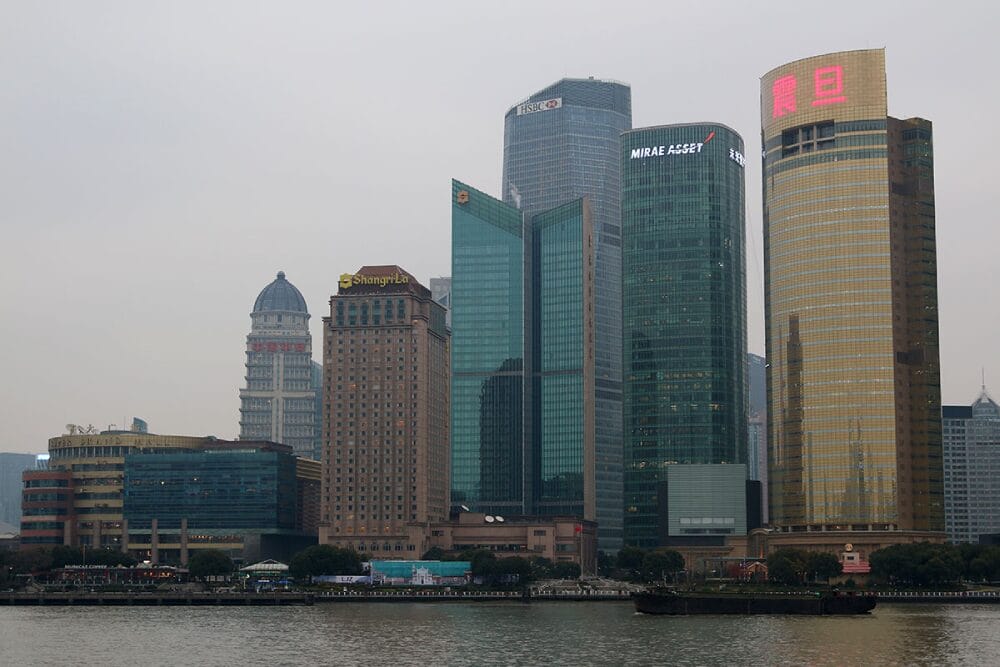
Arrival and Realization: No Google, No Problem?
After customs, I needed to get a a 72-hour transit visa. The process was straightforward—I paid the fee, got the visa stamped in my passport, and was officially in China.
I went to withdraw some cash, which is something I always do when traveling—both as a backup in case my card doesn’t work and as a keepsake. I always aim to have the equivalent of $50 or so in local currency, just in case.
But then, I encountered my first real hurdle. I knew ahead of time that Google services don’t work in China. That meant no Google Maps, Google Translate, Gmail—nothing. It also meant that all of Facebook services didn’t work either as they are also banned. Facebook, WhatsApp, Instagram- all of my methods for communicating with anyone, or searching for anything were basically not available to me. I had prepared by downloading a VPN, but as soon as I turned it on, it worked for about two minutes before cutting off completely. Even with a local SIM card, I had no access to my usual go-to apps. I was effectively flying blind – and I was about to be exploring Shanghai for the next 17 hours.
Once this realization sank in – I knew I needed to get from the airport to the city center to meet my tour guide, and I had about two to three hours to figure it out.
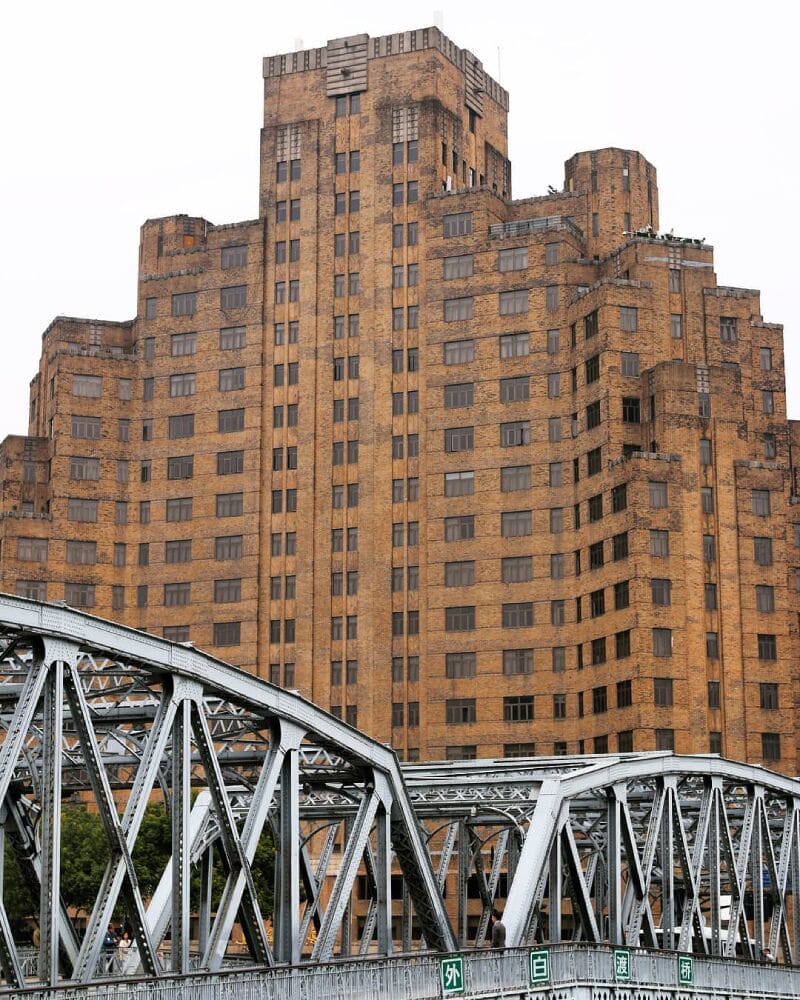

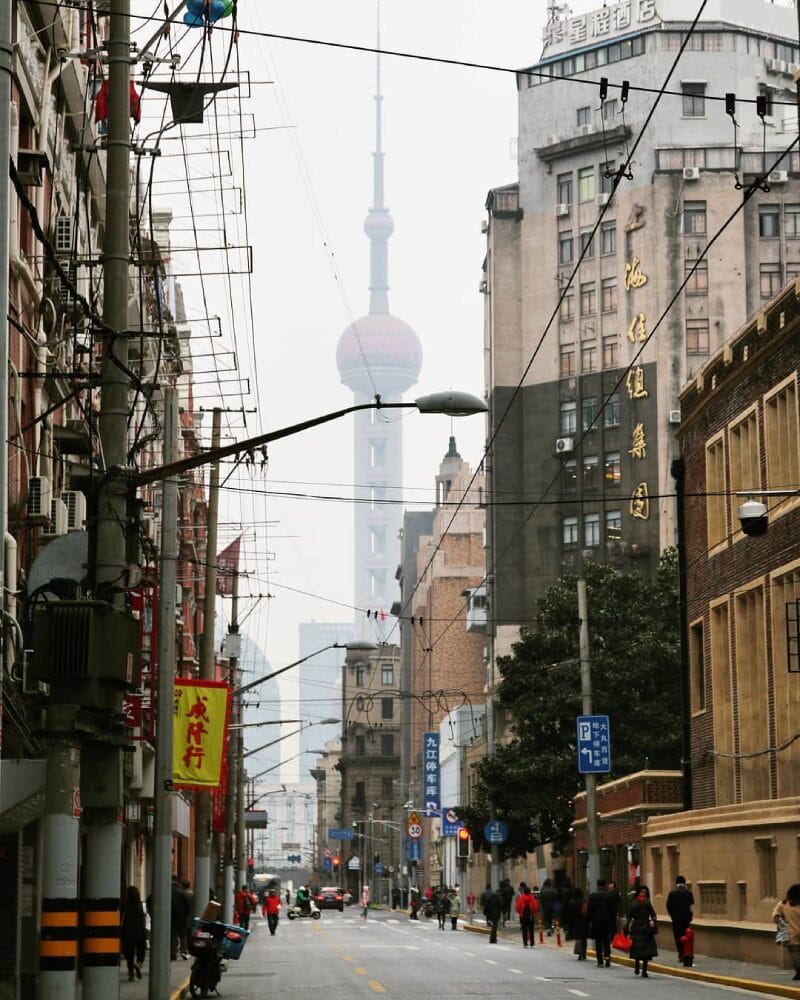
Smog City: The Reality of Urban Pollution
The first thing that I noticed when I left the airport, was a distinct smell in the air. And at first, I couldn’t quite place it. It smelled a little like sweat, a little like car exhaust—kind of melted into one. It was smog, but not like I had experienced before.
The smell wasn’t by any means an overpowering stench, but a distinct presence in the air. It was more like walking into a smoker’s house—you just knew it was there.
After a little while, I barely noticed it anymore. It wasn’t a sudden shift in scent but rather an acceptance that this was just the air I was breathing now.
Maybe I’ve been reading too much about synesthesia, but when I opened these photos on my computer, my nose and mouth filled with what I smelled and tasted that day—good ol’ Shanghai! (mask not included).
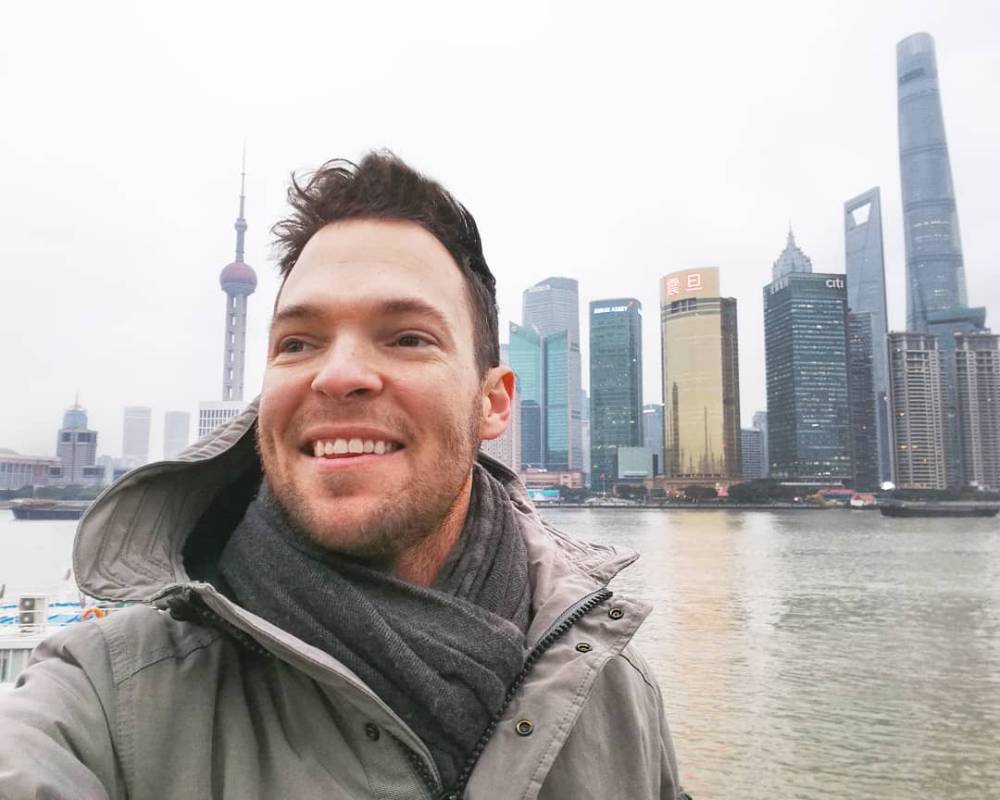
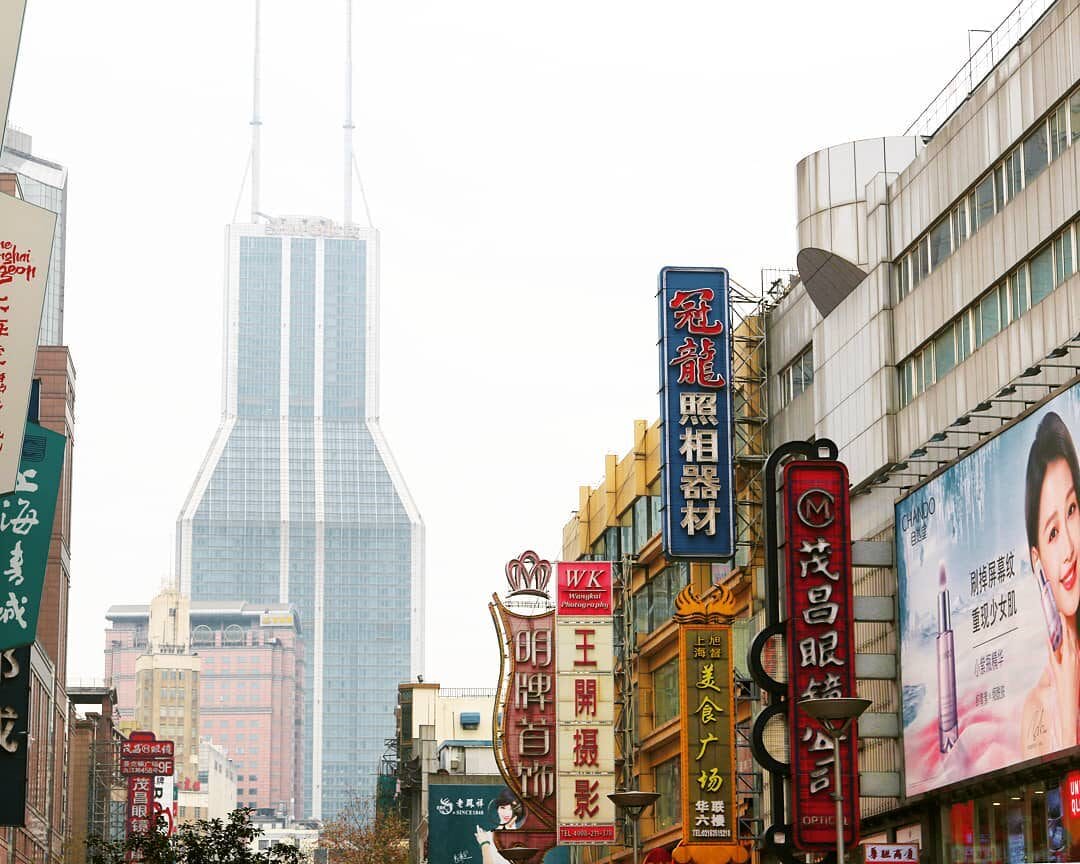
The Metro
I hopped on the metro, which was relatively empty at first. But as we got closer to the center, more and more people got on. Then more. Then more. Soon, it was packed—like, sardine-can packed. At each stop, I thought, “This has to be the max capacity,” and yet, somehow, people kept squeezing in. At one point someone basically attempted to crowd surf their way in to the already pack train car – and somehow everyone just sort of helped make sure their legs didn’t prevent the door from closing to prevent delays.
I had no way of knowing exactly where to get off. We left the area around the airport and passed through residential areas, a mix of farmland and small houses, spotted with various multi-storied residential towers. The metro signs were all in Mandarin, and while I had a general idea of the direction I needed to go, I couldn’t read anything. Eventually, I figured out a stop that seemed close enough to where I needed to be and got off and just started walking. That’s when I realized I was still miles away.
Taxi Trouble
I hailed a taxi, thinking that would make things easier. Nope.
I tried telling the driver I needed to go to The Bund. Nothing. I showed him “Hyatt Bund” on my phone. Blank stare. I even pulled up the Starbucks logo, assuming that at least a global brand that I knew was in the area might be a reference point. Still nothing.
So, using a screenshot map I resorted to pointing and using hand gestures. I motioned for him to keep going straight, then left, then straight again. Eventually, when I was close enough to recognize a few landmarks, I tapped on the glass and signaled that I’d get out.
When it was time to pay, I had another realization—numbers on the taxi meter weren’t in Arabic numbers. I had no idea how much I owed him. I just handed him some cash and hoped for the best. He seemed honest enough, took what he needed, and handed me back some change.
The Breakfast Surprise
Thankfully it didn’t take me long after I got out of the cab to find the meeting point where I was to meet my guide, and I still had an hour and a half before my tour started so I decided to grab some breakfast. I wandered around the block to see if anything nearby stood out as a place to eat, and I stumbled upon a small quiet strip mall with one little restaurant in it. I walked into what appeared to be a small local spot with pictures of food on the wall. I pointed at something that looked relatively normal and ordered tea as well. I think I said 谢谢 / xièxiè (pronounced shieh-shieh) as often as I could which means ‘Thank you’. ( it was really the only Mandarin that I knew how to say at the time )
What arrived was a bowl of soup—with an entire fish hanging out of it. Head, tail, scales—everything.
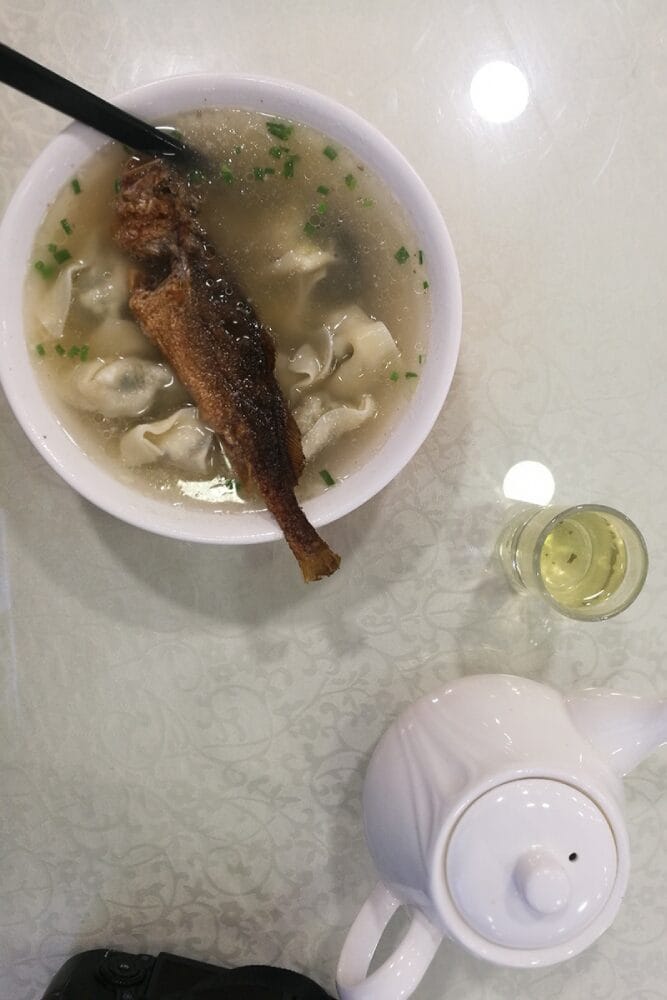
The broth was actually delicious, but I had no clue what to do with the fish itself. I did my best to pick at it and thanked the woman who had proudly served me what I assume was her best fish of the day.
After breakfast, I reached for my debit card—and……………… it was gone. This was the primary card I had for my entire 11-day trip across China and Thailand. I checked every pocket of my jacket, my bag, my pants—nothing.
Thankfully, I had some cash left from my earlier ATM withdrawal, so I decided not to panic. It had to be somewhere, right? I had like 25 pockets. I just hoped it wasn’t lost forever.
Big Brother and The Bund
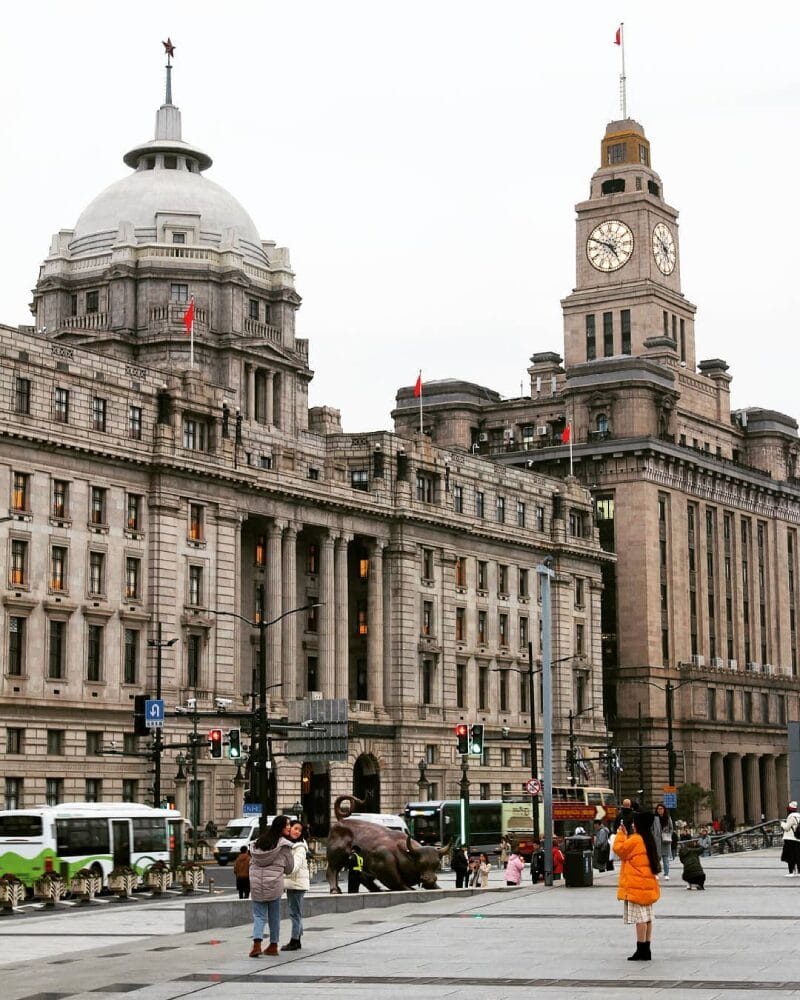
After breakfast, I made my way toward the meeting point for my tour. I arrived a few minutes early and waited on the corner where my guide was supposed to meet me. Finally, he arrived, and we started our tour of The Bund district.
Walking along The Bund, I felt like I had stepped into Europe. The architecture was completely European-inspired, and even inside the hotels, there was a distinct lack of the traditional Chinese aesthetic.
The grand colonial buildings, the stunning waterfront skyline, and even their own version of NYC’s Charging Bull (zoom in—it’s there) made it easy to forget I was in China.
However, there was something missing—something about the area felt oddly lifeless. There weren’t many people around, which surprised me. Maybe it was the time of day or the season, but I had expected crowds. Instead, it felt eerily quiet.
About 50 yards ahead, I spotted a police surveillance van. And then another one, and another one, and another one – and then I realize that all around me were cameras. Wow, Shanghai’s surveillance is crazy. As of 2019, the city had around 2 million surveillance cameras.

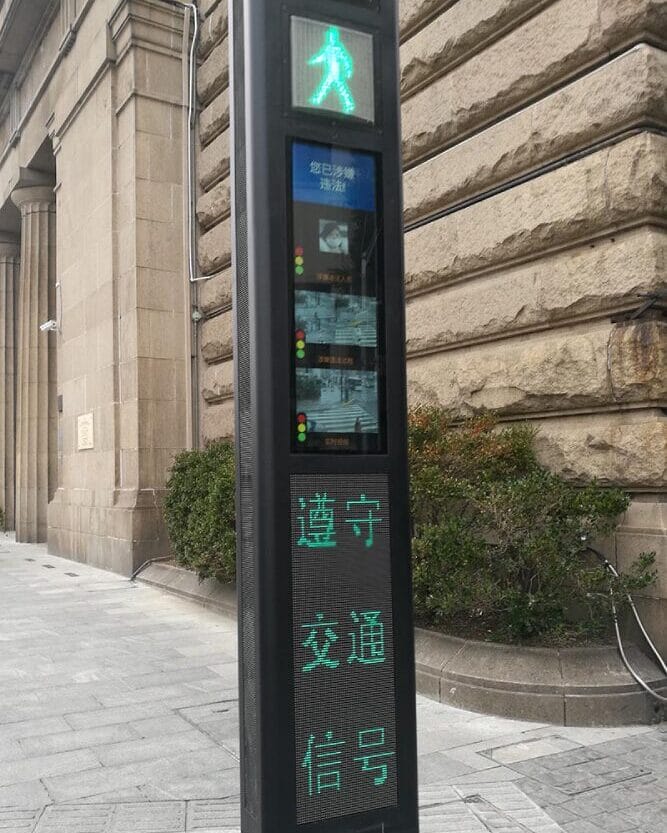
As we walked over a crosswalk, I noticed a group of police officers standing by, likely waiting for the system to identify us through facial recognition. It was surreal—such a different world. We continued our tour, passing through various hotels and buildings, as he pointed out the financial district across the water.
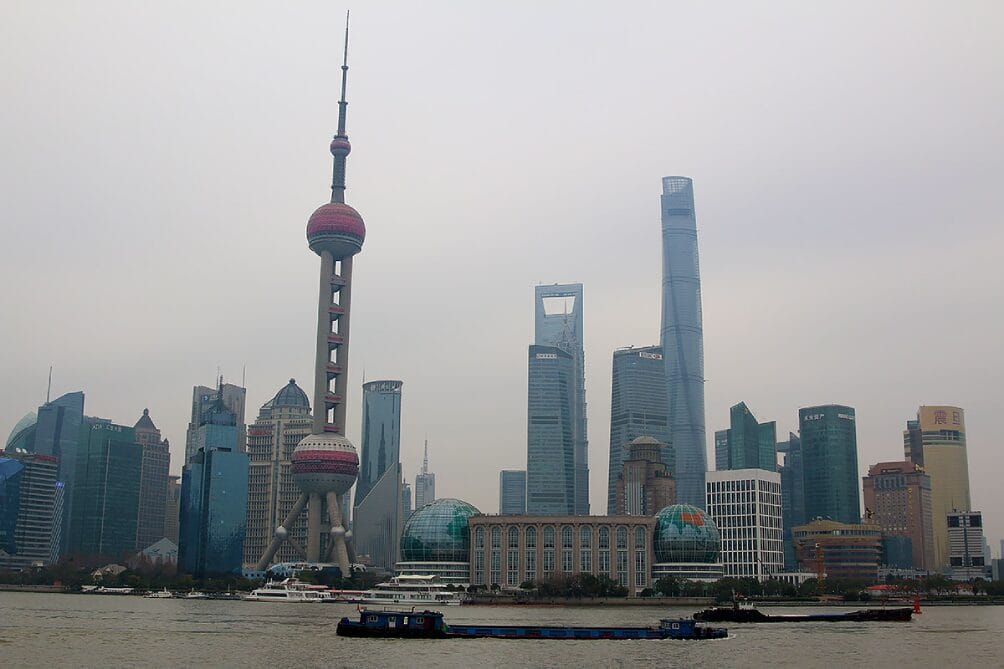
And Now, We Feast
Part of the tour I had designed with my guide was that I also wanted to do a tasting of local dishes, so we headed to a restaurant he had chosen. Her ordered us a variety of dishes, and I was really pleased to see a mix of things I was familiar with – as well as some stuff that I had never seen before. The smells that filled the air were wonderful, and it was quite the busy place. I seemed like a place where a lot of people go on their break from work, and I really liked that. A local vibe was definitely what I was looking for. We ate mix of various things like savory soy-braised pork belly with eggs, clay-pot chicken, and sweet lotus root with sticky rice which were all delicious. He asked if I also wanted Peking Duck, but I told him I was saving that for when I got to Beijing 😉
Thankfully, the meal was included in the tour price as my card had sadly not magically appeared yet. The lack of it made me feel incredibly vulnerable—especially on the first day.
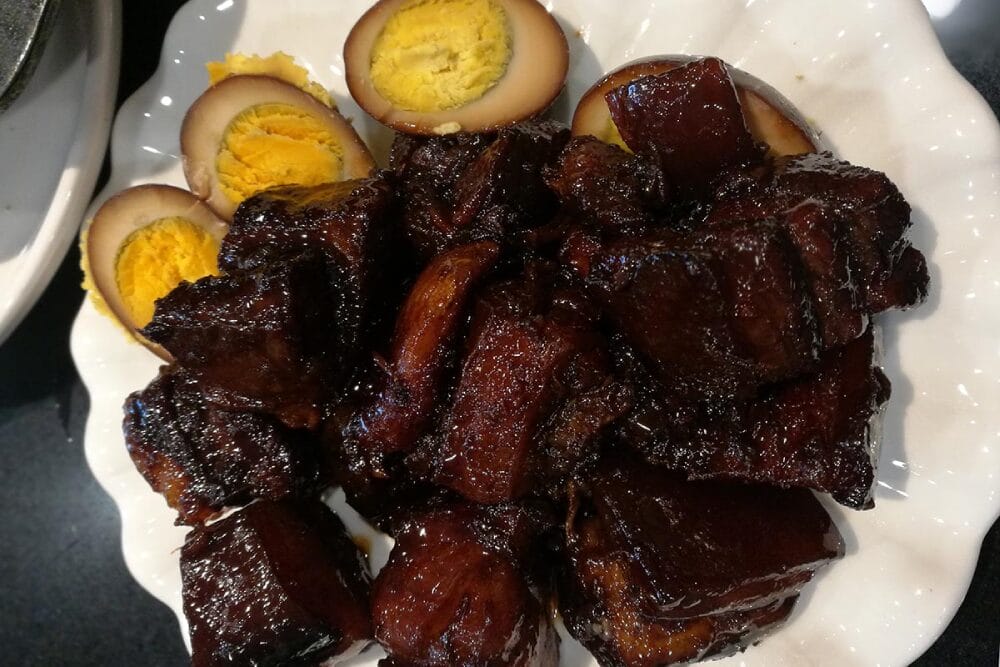
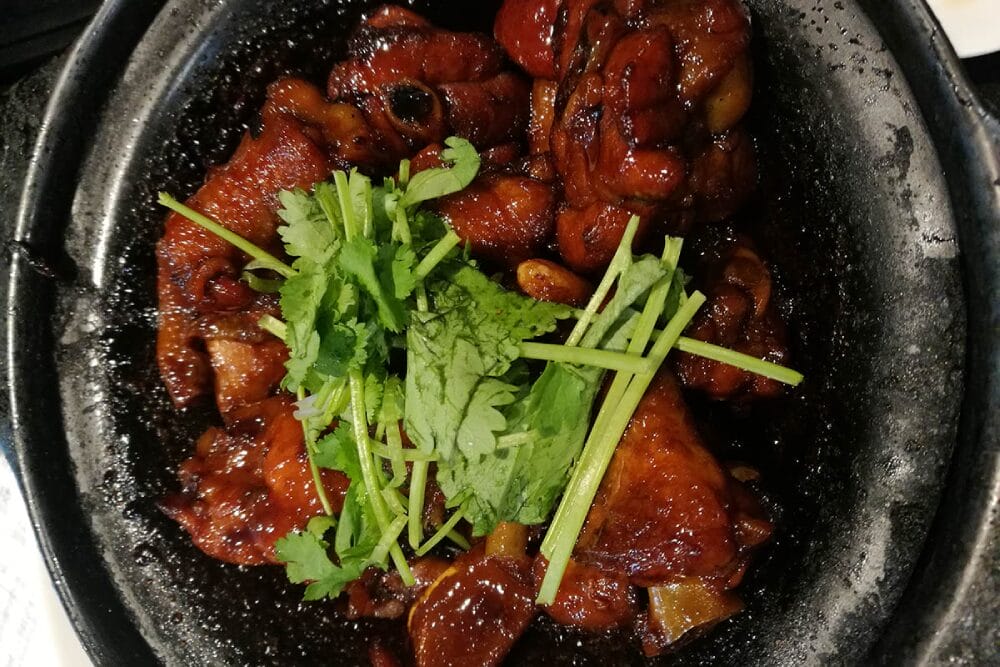
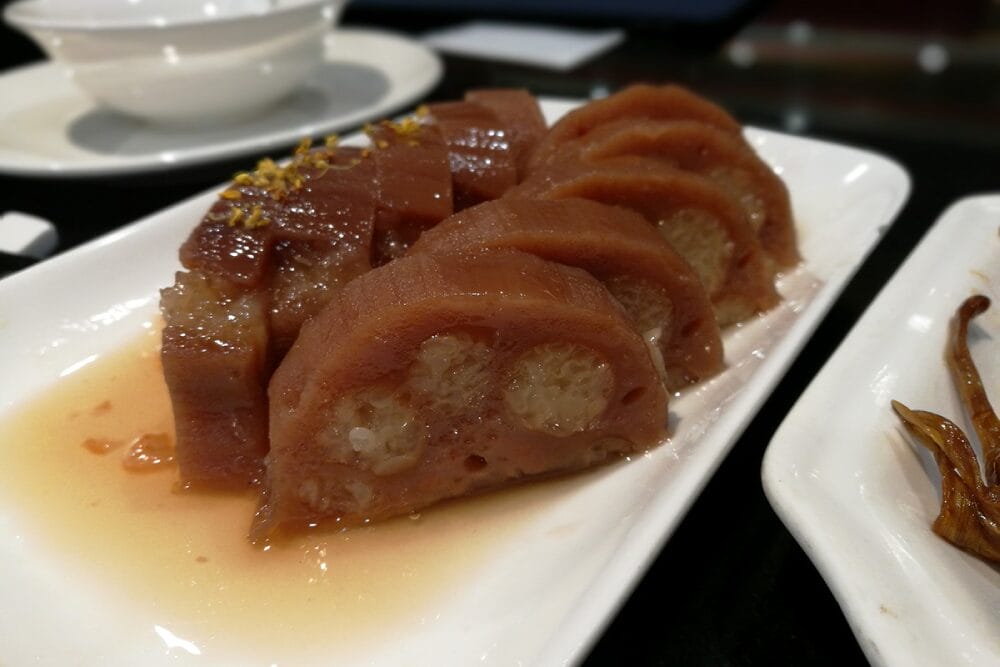
A Fusion of East and West
Shanghai blends the old and new effortlessly. Throughout the tour the contrast was clear. Traditional elements, like pig statues to represent prosperity and ornate artworks stood alongside modern, minimalist furniture and elaborate chandeliers.
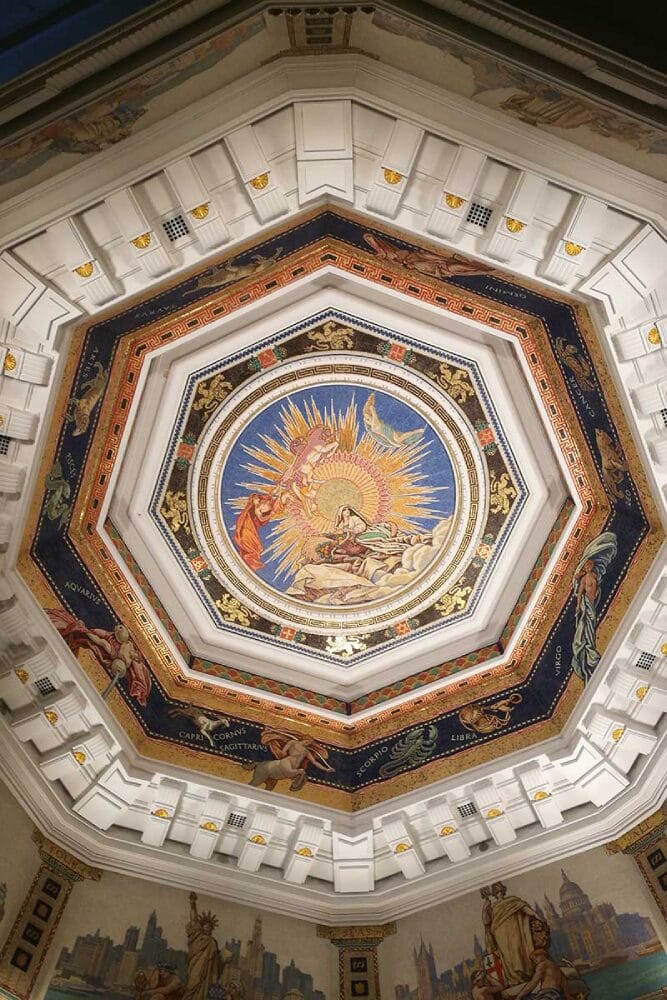

It was something I noticed throughout the entire city—a fusion of past and present, East and West. Shanghai is a paradox. Centuries-old tea houses nestle in the shadows of skyscrapers. The city pulses with a modern energy, yet its soul is steeped in tradition.
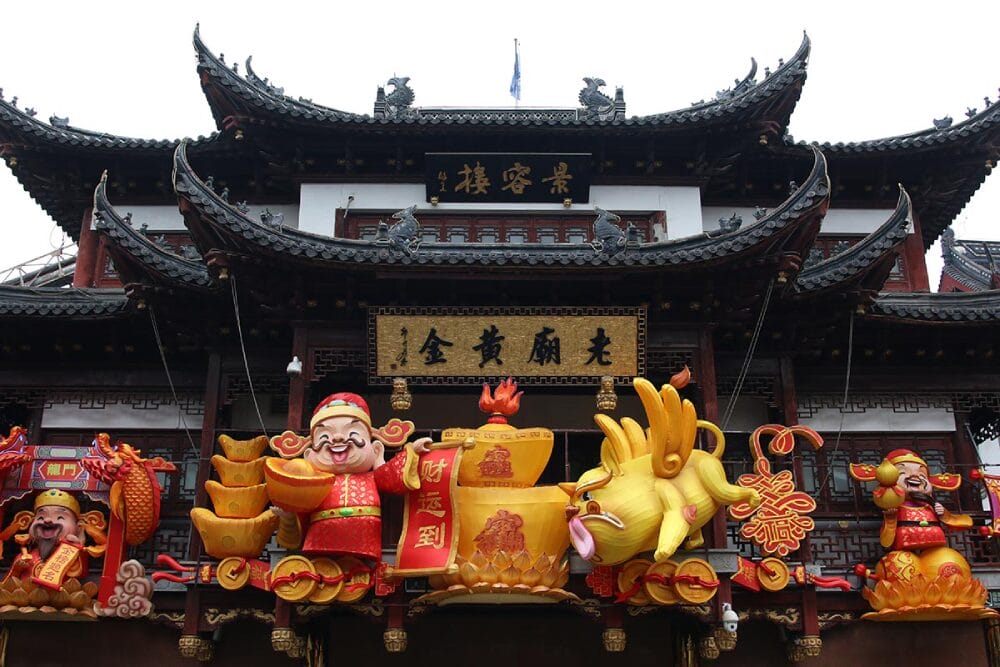
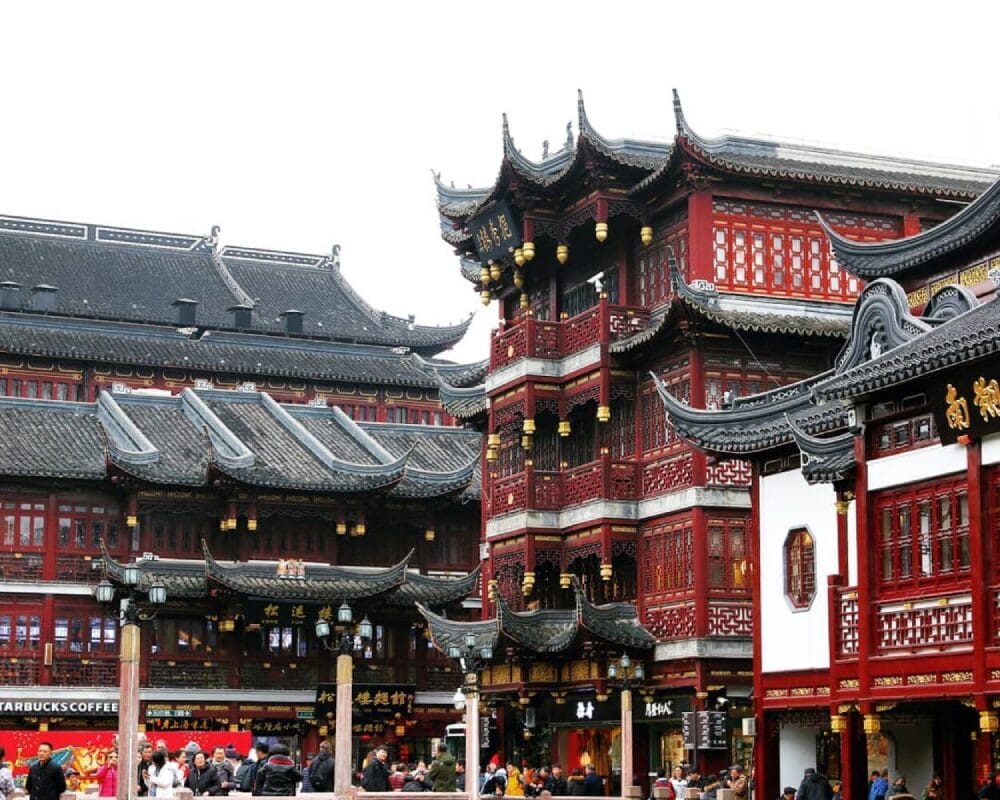

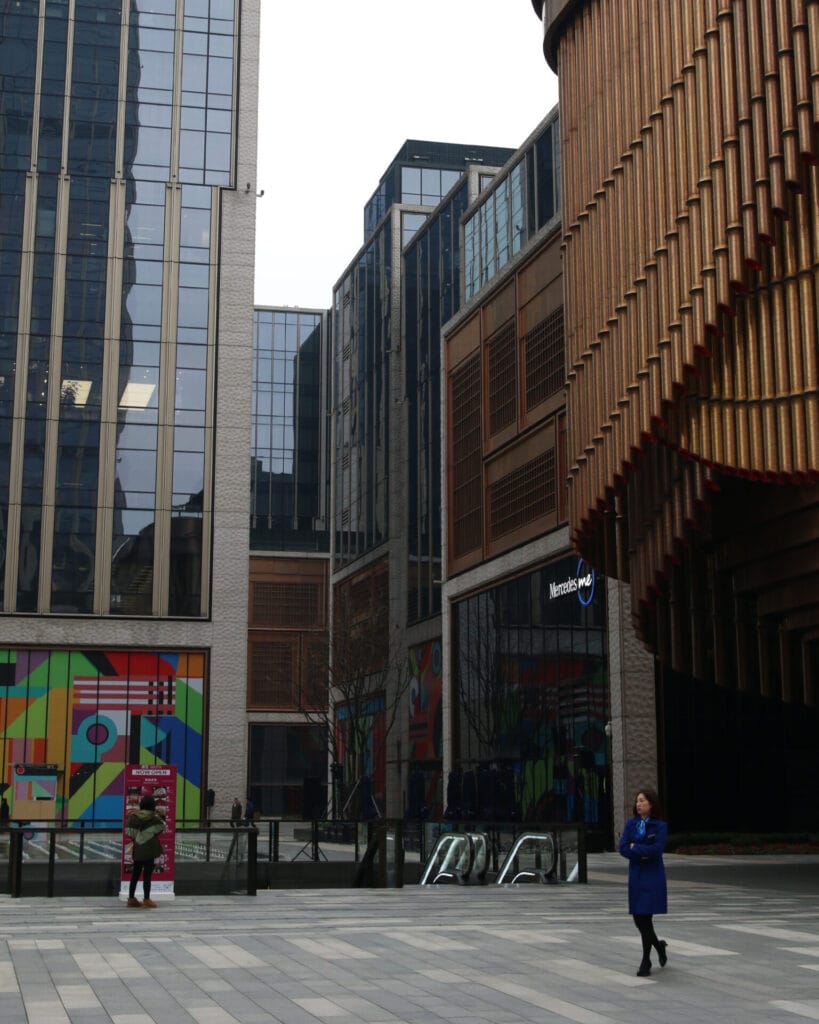
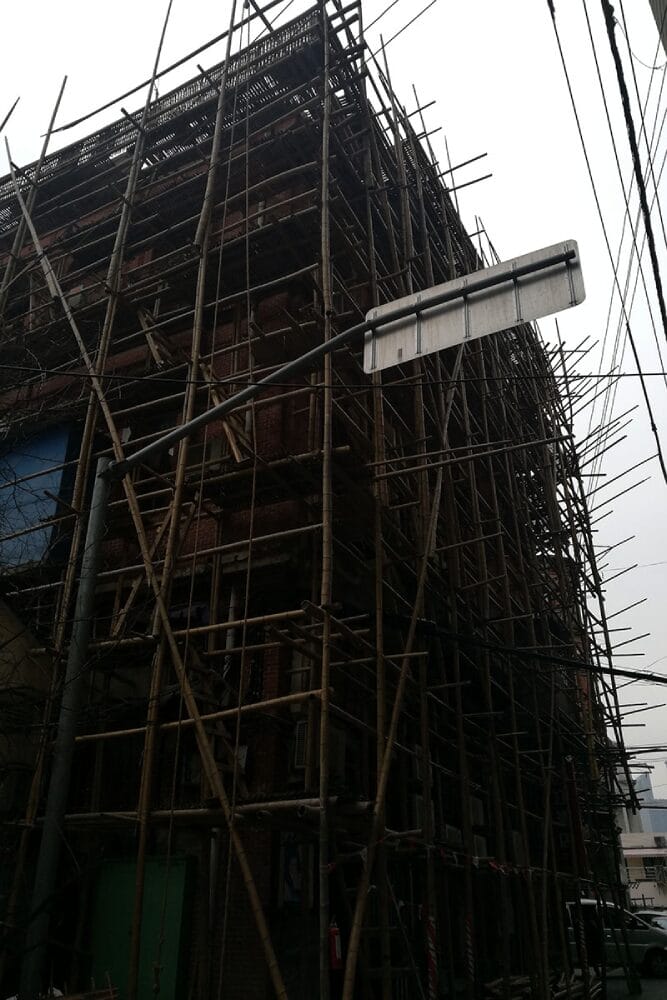
While walking through Shanghai, I stumbled upon this fascinating building precariously wrapped in bamboo scaffolding.
At first glance, it looked so scary and my mind struggled to comprehend how the workers felt climbing up it everyday. It was a true bonus experience in my journey!
I later learned that the bamboo scaffolding skill is still frequently used across Asia for cost effectiveness. It takes a skilled craftsman to securely tie it, and for many families, this skill is passed down through the generations.
But beyond the smog and neon lights, there are pockets of tranquility—like the serene Yu Garden, where winding pathways, koi-filled ponds, and classical pavilions offer a glimpse into past world.
Nature in the City
I spent time wandering through the gardens, following my instincts. In the sprawling Yu Garden, time seemed to slow. It was really peaceful.
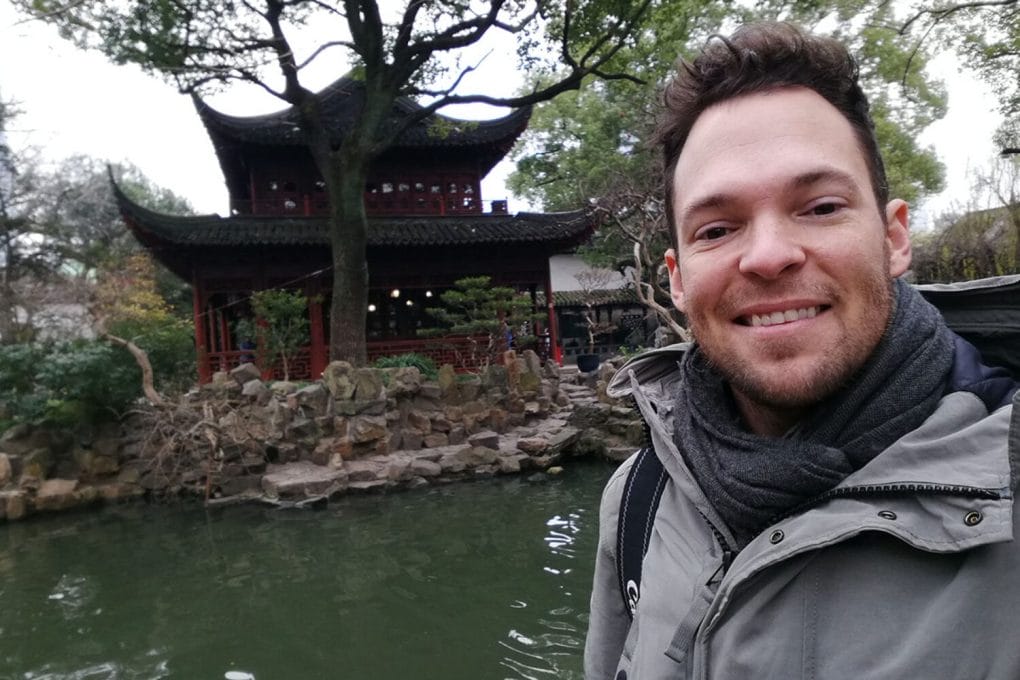


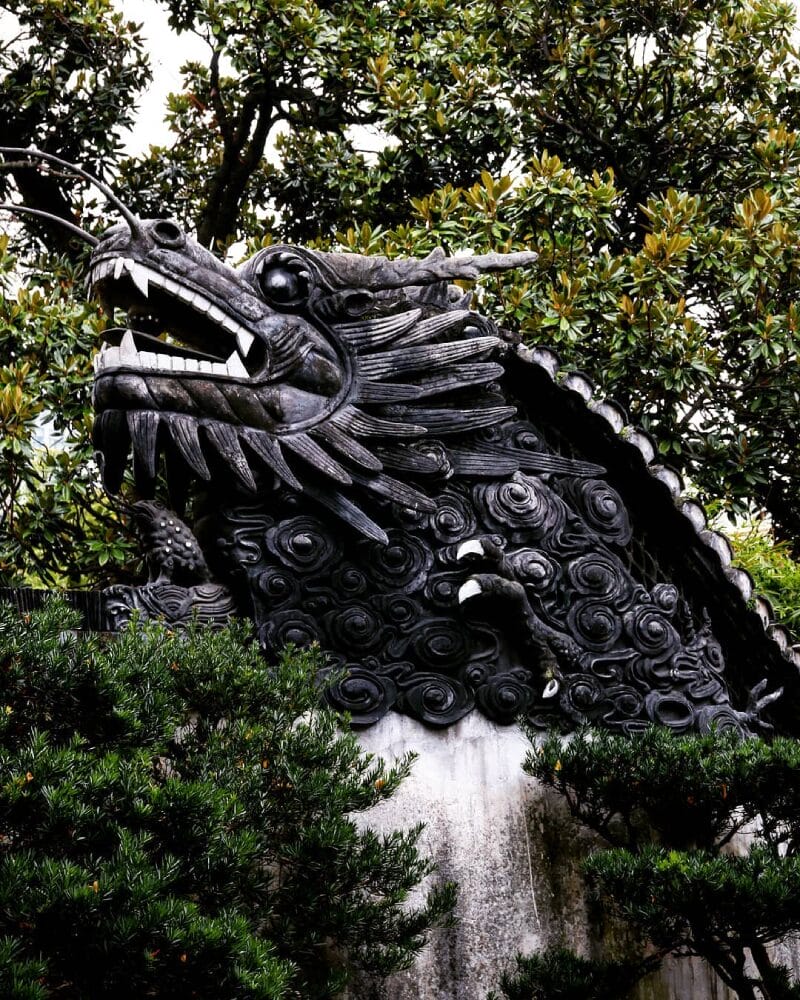
Riding the Shanghai Maglev
As my day was coming to the end, I knew I needed to head towards the air port. While in the process of trying to sort that out, I somehow stumbled upon the Maglev train. I had no idea it was there, but as soon as I saw it, I knew I had to take it. The Maglev train is the world’s first first commercial high-speed magnetic levitation (maglev) train line and it was one of the coolest things I have ever experienced in my life.
Developed by the Chinese government as a prototype to demonstrate new technology, it was a short track running from the station to the airport. Normally, a ride would take about 30 minutes, but the Maglev got you there in just 12.
The train itself looked modern from the outside, but inside, it had a dated feel, with retro bluish-green upholstery. It was a strange mix of old and new—using cutting-edge technology, but with interiors that seemed stuck in the past.
As we accelerated, it ramped up much faster than a European train, which gradually increases speed. The Maglev shot forward, quickly reaching its maximum speed, which was only maintained for a few minutes before slowing down to avoid hard braking at the airport.
Flying over the tracks at 430 km/h, the Shanghai Maglev feels more like teleportation than transportation. At some point, I stopped checking the speedometer above the door and just let the world blur past—pure, effortless motion.
After that once-in-a-lifetime ride, I boarded the plane to my next destination, Bangkok.
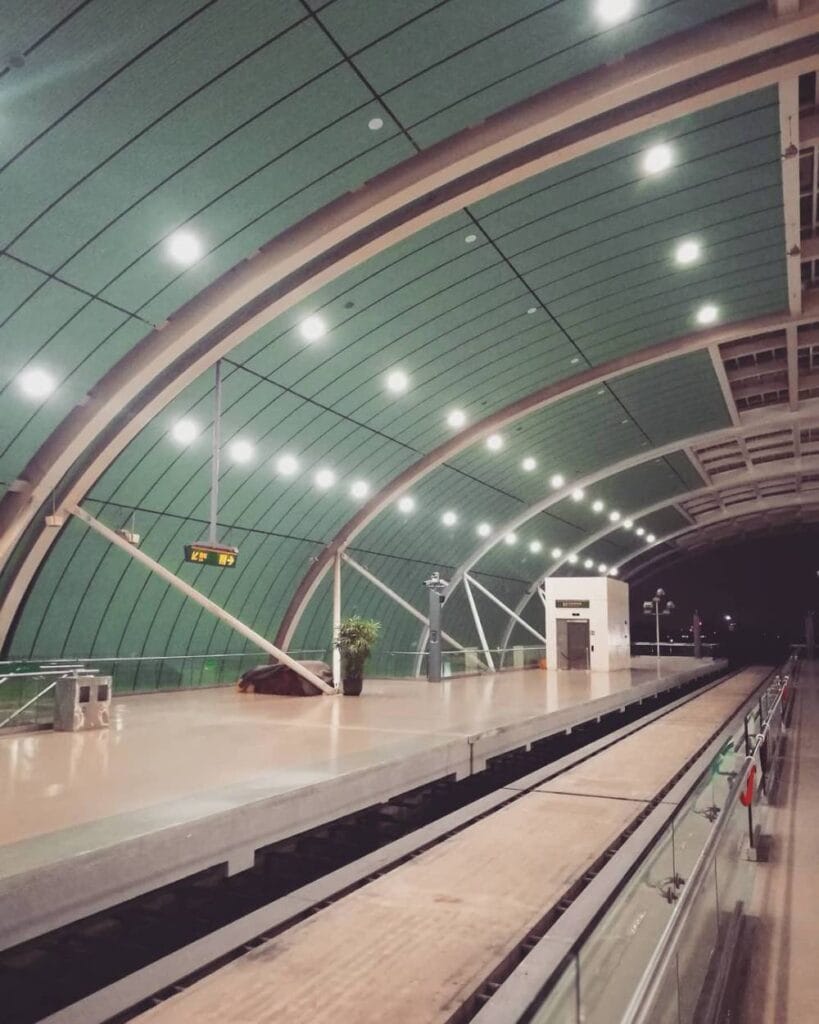
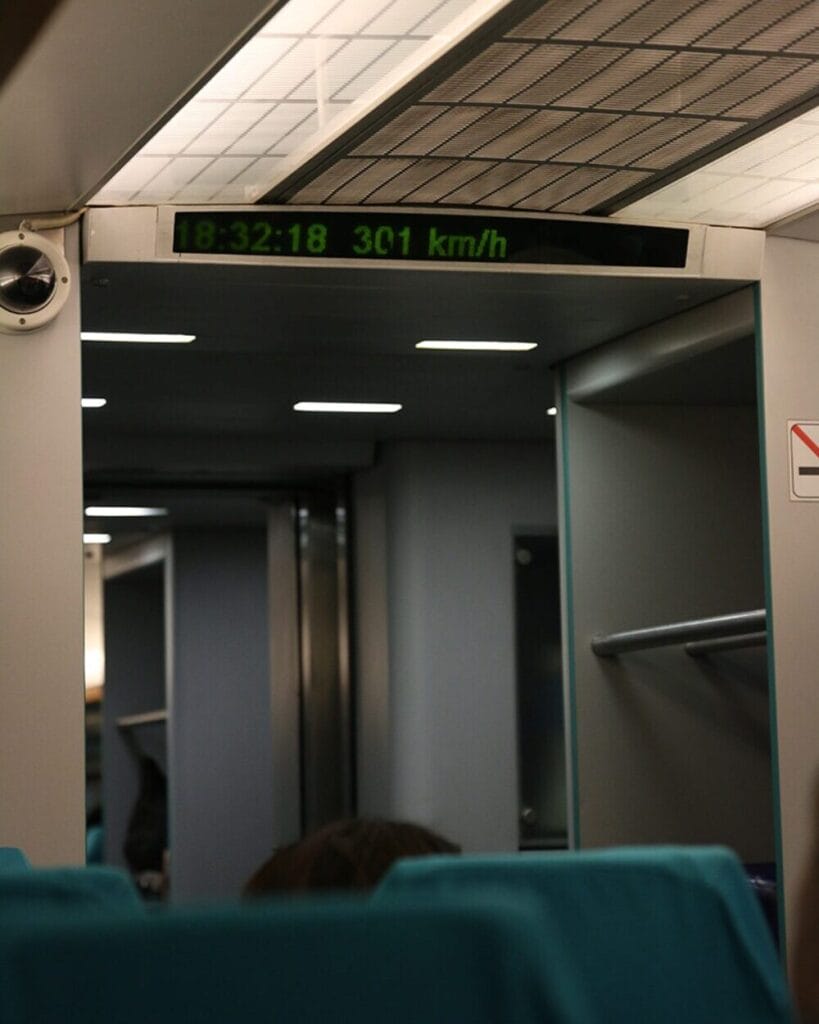
Shanghai was an incredible experience—exploring such a vibrant city, figuring out a totally new culture, and doing it all without Google. Honestly, it really changed how I think about traveling, language barriers, and adapting to unfamiliar situations. The city pushed me way outside my comfort zone.
I had to quickly learn, adapt, and view the world from a completely different perspective. One key takeaway? Preparation is everything—screenshotting essential documents in advance can save you from unexpected challenges, especially when Google services are inaccessible. With the right planning, exploring Shanghai without Google isn’t just possible—it’s an adventure well worth taking.


